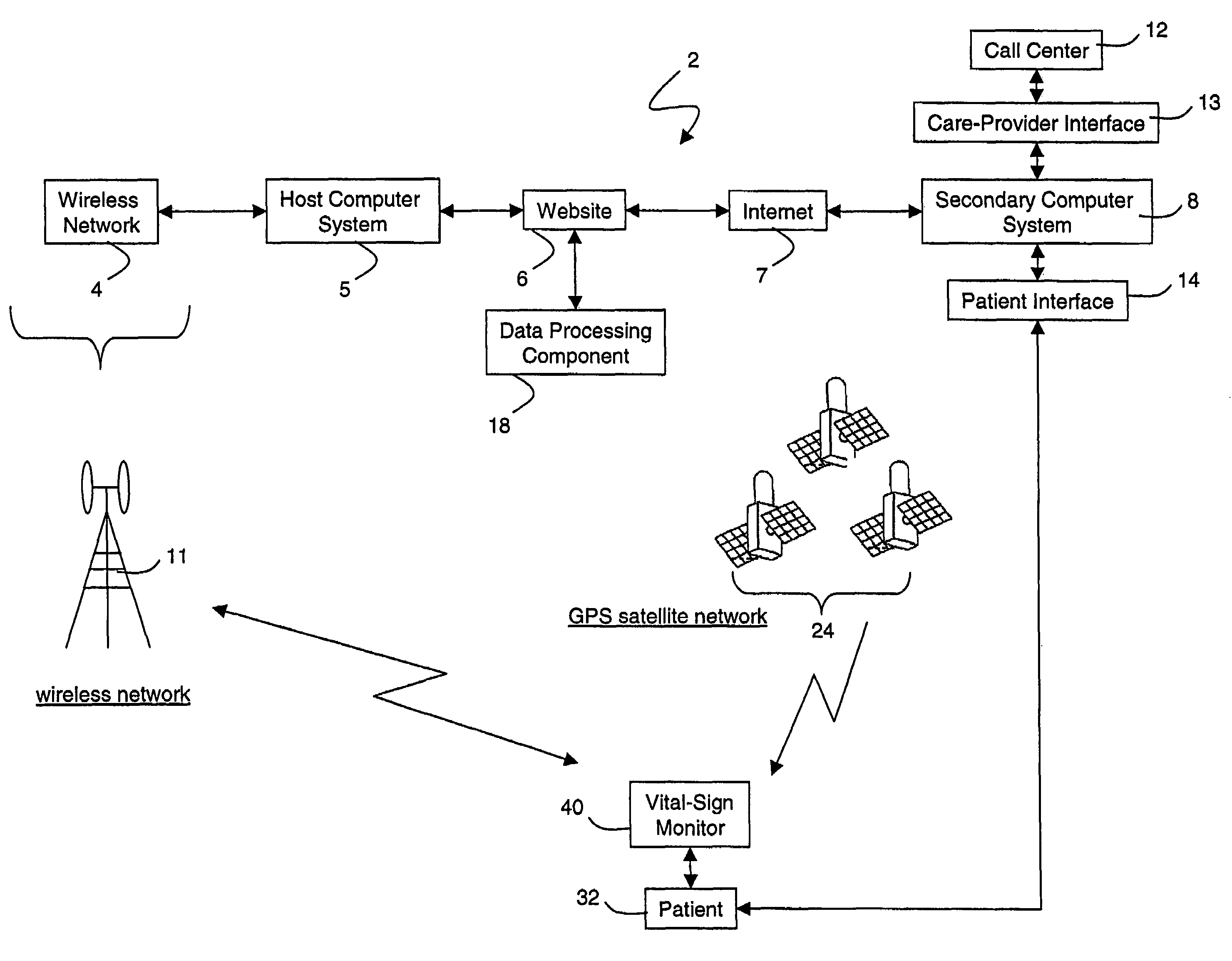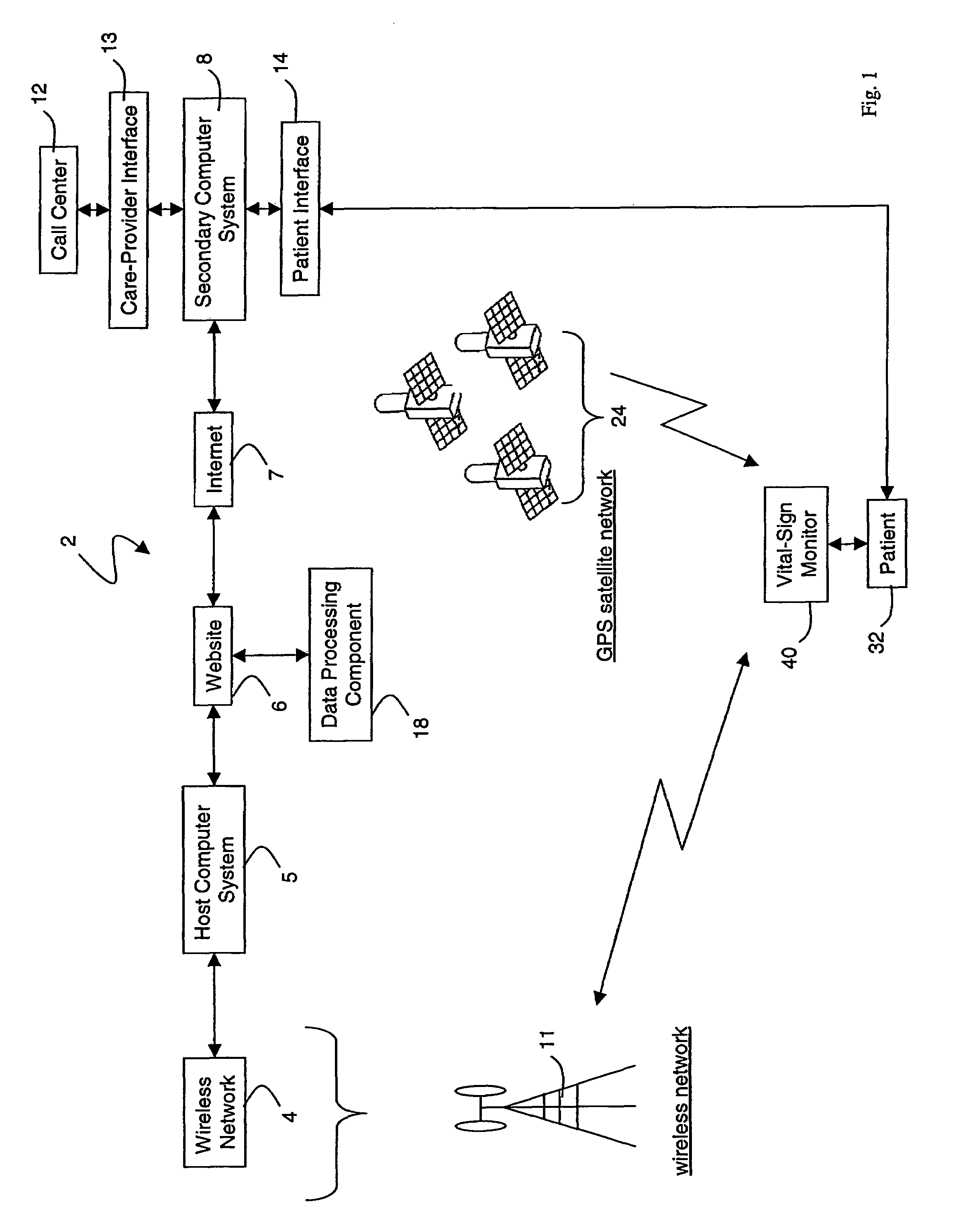Wireless, internet-based medical-diagnostic system
a medical-diagnostic system and internet-based technology, applied in the field of wireless internet-based medical-diagnostic system for diagnosing patients, can solve problems such as inaccurate diagnoses, and achieve the effect of accurate diagnosis of patients
- Summary
- Abstract
- Description
- Claims
- Application Information
AI Technical Summary
Benefits of technology
Problems solved by technology
Method used
Image
Examples
Embodiment Construction
[0037]FIG. 1 shows a schematic drawing of an Internet-based medical-diagnostic system 2. The system 2 features a vital-signs monitor 40 that measures vital-sign data from a patient 32 and wirelessly transmits these data over a wireless network 4 to a web site 6 accessible through the Internet 7. The system 2 functions in a bi-directional manner, i.e. the vital-sign monitor 40 can both send and receive data. In typical operation, for example, the vital-sign monitor 40 predominantly transmits vital-sign data through the wireless network 4 to the web site 6. Using the same network, the monitor 40 also receives text-based instant messages (described with reference to FIG. 8) and software upgrades to function in a bi-directional manner.
[0038]The vital-sign monitor 40 includes systems that measure, e.g., blood pressure, O2 saturation, ECGs, heart rate, respiratory rate, and blood glucose level. After these data are measured, software in the monitor 40 formats them into a data packet. The ...
PUM
 Login to View More
Login to View More Abstract
Description
Claims
Application Information
 Login to View More
Login to View More - R&D
- Intellectual Property
- Life Sciences
- Materials
- Tech Scout
- Unparalleled Data Quality
- Higher Quality Content
- 60% Fewer Hallucinations
Browse by: Latest US Patents, China's latest patents, Technical Efficacy Thesaurus, Application Domain, Technology Topic, Popular Technical Reports.
© 2025 PatSnap. All rights reserved.Legal|Privacy policy|Modern Slavery Act Transparency Statement|Sitemap|About US| Contact US: help@patsnap.com



